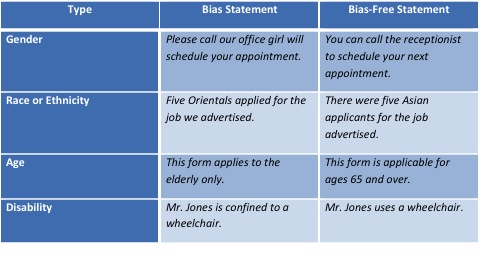Learning Outcomes
- Develop professional/technical documents with a clear awareness of ethics.
- Recognize and discuss important elements of how culture affects communication in collaborative workplaces.
- Illustrate and analyze audience while creating various professional/technical documents with a sophisticated awareness of audience as a reader and a writer.
- Demonstrate audience and rhetorical awareness in visual design while creating professional/technical documents to visually appeal to appropriate audiences.
A crucial part of achieving a purpose when writing technical documents is to consider the needs and level of knowledge or expertise of your audience. Inaccurately making assumptions regarding audience creates failure in Technical Writing, not only in design, but for ethically and culturally aware content. For simple, routine messages, it is not necessary to analyze your audience in depth. However, for complex or highly technical messages, taking the time to analyze the needs and knowledge base of your audience will increase the likelihood of a successful transmission.
Analyzing Your Audience’s Needs
Here are some key questions to ask when determining the readers’ needs during your preparation:
- Who specifically is your reader? Are there multiple readers?
- What do your readers already know about the subject?
- Do you need to modify your message for international readers? Are there cultural issues that you need to address or avoid?
As a writer, your most important responsibility is determining who makes up your audience. You should continue to analyze your audience throughout the composing process. You can build a legitimately accurate representation of your audience by asking yourself key questions before and while you write. See Table 1 for examples of these questions.
Once you identify your audience, decide how to get the best results from your communication by determining your audience’s knowledge, ability, and interests. See course specific suggestions and Figure 1 to see how a specific audience compares to a more generalized one.
ENC 2210 –Tech Writing for the Health Sciences
While it might be acceptable for a physician to refer his patient to a specialist for their exanthema, that patient is more likely to understand the term “skin rash”. As a writer in the medical field, the importance of writing appropriately for your audience could be lifesaving and it will be far less stressful on patients to not keep a medical dictionary on-hand just to decipher what ails them.
ENC 3246 – Communications for Engineers
As an engineer, you will likely need to communicate with several different audiences and possibly all in one document. For example, should you draft a technical report on your latest project, the company president will be more interested in the executive summary and the financial reporting whereas fellow experts will be more interested in the technical details of the project and you can easily communicate with them using charts, mathematical expressions, and technical terms. Both audiences will read the entire document, but focusing those areas to each group will allow you to communicate your purpose more efficiently and effectively.
ENC 3250 – Professional Writing
At some point, you have probably received instructions on how to complete a task or put something together and have been left wondering what exactly you are supposed to do. You know it’s in English, but it just doesn’t make sense. Professional Writers can adapt instructions written by technical experts to be comprehended by a general audience. Many products purchased today require some sort of assembly. You can easily identify which companies have invested money in hiring skilled professional writers by how effortless the instructions are to follow.
Are your readers knowledgeable or have the same background and familiarity with the subject as you, or are they layperson, unfamiliar with technology or process you are writing about? The less your audience knows about the subject, the less technical your document should be and all terms should be clearly defined. If your audience is a group of people with diverse knowledge, or you don’t know your immediate audience, you may need to make an educated guess on needs and interests. In this case, you should err on the side of caution by clearly defining all process and terms that could be confusing.
Primary, Secondary, and Hidden Audiences
Primary audiences are those who receive the communication directly and are also known as the target audience. The person is also usually the decision maker. Secondary audiences are those readers who are not the primary addressee, but are still included as viewer. Figure 2 shows an example of both a primary and secondary audience. This typical business memo is being directly sent to Stan Jobs, who is the main, or primary, audience. Linda Smith, the sender, has also decided to send George Jones a copy of this message, as shown on the CC line of the memo.
A hidden audience are all those who fall outside of the primary and secondary assignment. This could be someone who shares a common interest with either the primary or secondary or is just an indirect recipient of your document. Looking at that same memo, let’s say that it is standard practice at the Green Bean Company to post all new policies in a common area. All employees and those who see the posted memo would be considered a hidden audience. They aren’t specifically mentioned in the memo heading, but knowing that the document will be posted, Linda would be sure to use language that would be understood by that hidden audience as well.
Using Bias-Free Language
Technology has not only made our lives easier but it has bridged our World closer together making it accessible to conduct business on global level. When adapting a message to your audience, be sure to use language that is both unbiased and sensitive. Use caution with expressions could be biased in terms of gender, race, ethnicity, age, and disability. Avoid use of idioms and phrases as they are often confusing or offensive in other cultures.














